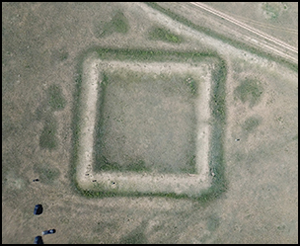Published online by Cambridge University Press: 09 June 2020

The long walls of China and the Eurasian Steppe are considered to have functioned as either defensive structures against aggressive nomadic tribes, or as elements to control the movement of local nomadic groups following imperialist expansion. This article focuses on a hitherto understudied 737km-long medieval wall running from northern China into north-eastern Mongolia. Built by either the Liao or Jin Dynasties, the wall features numerous auxiliary structures that hint at its function. In research relevant to interpreting other Eurasian and global wall-building episodes, the authors employ extensive archaeological survey and GIS analysis to understand better the reasons behind the wall's construction, as well as its various possible functions.
To send this article to your Kindle, first ensure no-reply@cambridge.org is added to your Approved Personal Document E-mail List under your Personal Document Settings on the Manage Your Content and Devices page of your Amazon account. Then enter the ‘name’ part of your Kindle email address below. Find out more about sending to your Kindle. Find out more about saving to your Kindle.
Note you can select to save to either the @free.kindle.com or @kindle.com variations. ‘@free.kindle.com’ emails are free but can only be saved to your device when it is connected to wi-fi. ‘@kindle.com’ emails can be delivered even when you are not connected to wi-fi, but note that service fees apply.
Find out more about the Kindle Personal Document Service.
To save this article to your Dropbox account, please select one or more formats and confirm that you agree to abide by our usage policies. If this is the first time you used this feature, you will be asked to authorise Cambridge Core to connect with your Dropbox account. Find out more about saving content to Dropbox.
To save this article to your Google Drive account, please select one or more formats and confirm that you agree to abide by our usage policies. If this is the first time you used this feature, you will be asked to authorise Cambridge Core to connect with your Google Drive account. Find out more about saving content to Google Drive.